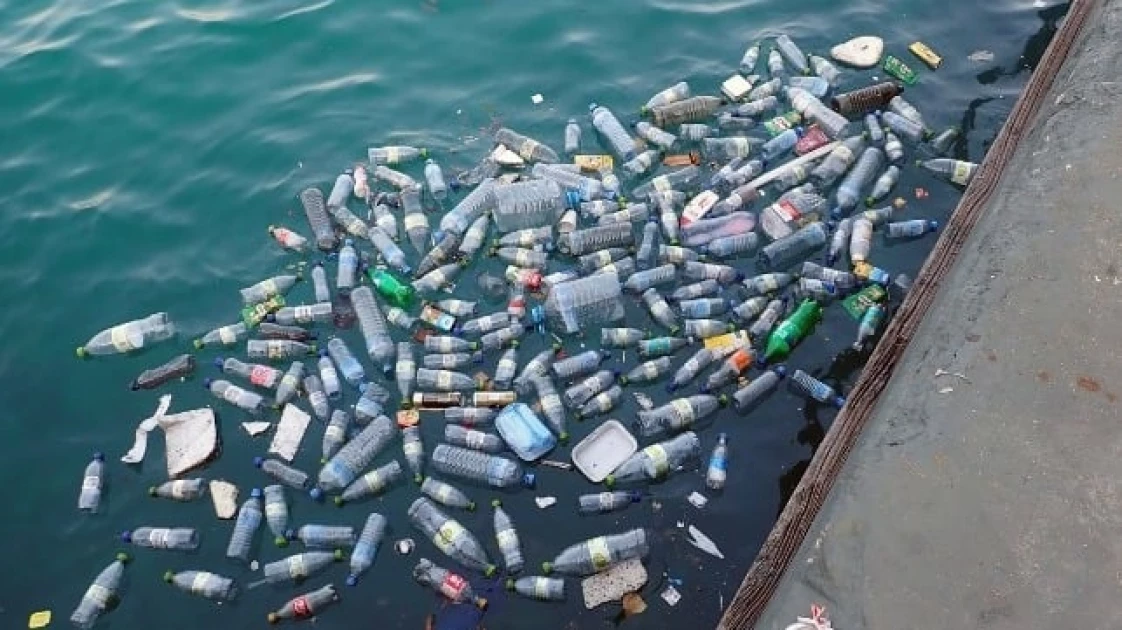How plastics rob fishermen of their livelihoods and the efforts to end their pollution

Plastic pollution

Audio By Vocalize
Everything was fine until around six years ago when Ojiambo and other fishermen started experiencing a decline in fish whenever they went out fishing.
Reports attributed the fish decline to several factors. The International Union for Conservation of Nature (IUCN) report of 2018 identifies primarily overfishing, pollution, agriculture, and invasive species as factors driving the decline of fish in Lake Victoria, the second-largest freshwater body in the world.
According to the United Nations Environment Programme, plastic pollution destroys the habitat and ecosystem of aquatic life, affecting the livelihoods of more than 3 billion people who depend on fish and seafood for nutritional value.
Lately, Ojiambo said getting fish, even enough for the family, hasn’t been easy, as fish seem to disappear every day. Citizen Digital caught up with Ojiambo after a night of fishing. Nowadays, going fishing is a waste of time, since the chances of returning empty-handed are high.
“The fish have become scarce, especially along the shores. It is not worth it anymore, spending time and resources on fishing activities that are not paying back. Today, it has become normal to go fishing and come back with very little, or at times without any fish,” Ojiambo says after arriving at Marenga Omena beach located in Port Victoria, Busia County.
Through various forums by government agencies such as the Kenya Marine and Fisheries Research Institute (KEMFRI), Ojiambo has learned that plastic pollution is a great enemy of their livelihoods. He explains that these plastics are finding their way into the lake through rivers.
“People throw these plastics in the rivers, and the rivers carry and dump them into the lake. If you walk around, you realize that the shores are packed and choking from plastics, responsible for chasing the fish to migrate to other clean areas or deep into the lake.”
Having been a fisherman for a long time, Ojiambo explained that there are times he finds dead fish and other aquatic animals that have been killed through entanglement in plastic bags.
“When fish are trapped by plastic and nylon bags in the water, they suffocate and die. So, they run away into safer environments; that’s why we cannot have a good catch nowadays,” he regrets. He said as people living around the lake and depending on fish for livelihood, it is not easy with reduced fish.
Apart from affecting and reducing fish stocks in the waters, plastic pollution contributes 5% of carbon dioxide emissions to the atmosphere, with this expected to increase to 20% emissions by 2040 if action is not taken.
Experts are warning that plastic pollution contributes to harmful impacts on human health, the loss of livelihoods, greenhouse gas emissions, biodiversity loss, and compromises the proper functioning of the ecosystem.
This has largely contributed to the negative impacts of global warming and extreme weather conditions being experienced in Kenya and other parts of the world, such as prolonged droughts and floods.
Dr. Casaines Olilo, Chief Research Scientist at the Kenya Marine and Fisheries Research Institute (KEMFRI), attributes aquatic deaths to plastic pollution in lakes, rivers, and oceans.
“In Lake Victoria, plastic waste has wrapped the aquatic ecosystem by entangling and harming fish and other wildlife. They degrade into microplastics, which contaminate water and enter the food chain, posing health risks to the local communities who depend on the lake for drinking water and food,” Dr. Olilo explains.
He states that plastic pollution in water masses affects the breeding of fish, which need a clean environment.
According to the United Nations Environment Programme (UNEP), every day, the equivalent of 2,000 garbage trucks full of plastic is dumped into the world's oceans, rivers, and lakes, leading to 19-23 million plastic waste leakages into the aquatic ecosystem every year.
Dr. Olilo adds, global reliance on plastics is driven by their cost-effectiveness and functional versatility, which makes them highly utilized in multiple sectors. Unfortunately, this contributes to environmental problems in regions like Lake Victoria and the western Indian Ocean in Kenya and parts of East Africa.
Mohammed Ali, a fisherman feeling the negative impacts of plastic pollution, shares that the catch has reduced tremendously and is not providing the livelihood anyone can rely on as it has in the past.
“I put nets as usual to catch fish, but instead, they catch plastic and other waste in the water. The fish cannot come near such waste, so I end up getting very little, a quarter of what I used to get before,” Ali explains.
He adds, “I have not known any other work apart from fishing. As fish continue to decline, the livelihoods of many people who depend on fishing activities face an uncertain future. We request the government to intervene and end pollution so that we can go back to our normal fishing.”
As Ali calls on the government to end plastic pollution, the whole world has converged in Ottawa, Canada, for the fourth Intergovernmental Negotiation Committee to discuss the need and rationale for a global treaty to end plastic pollution.
The purpose of the treaty discussions is to hold all countries to a high common standard on plastic consumption and create a clear path toward a future free from plastic pollution.
Speaking during the opening of the Fourth Intergovernmental Negotiating Committee (INC 4) on the Global Plastic treaty, in Ottawa, Canada, Inger Andersen, the Executive Director of the UN Environment Programme, said the time to save the planet Earth is now.
“We are seeing convergence on eliminating the uses that are problematic and avoidable. We will continue to need plastic for specific uses, such as renewable energy technologies. But there is growing agreement that short-lived and single-use can go,” Andersen said.
Already, Andersen praises the work they have achieved, but she’s quick to add, a job half-done is a job not done. And, time is against them in terms of finalizing the instrument and how much more the planet can take.
Speaking to the Citizen Digital desk, Neville Agesa, Chief Executive of the Africa Climate and Environment Foundation, says shores are important for turtle nesting and birds which fly long distances.
“The plastic gets into the ocean, and then about 15 percent of it is washed back onto the beaches, which are very critical nesting grounds for sea turtles, which impacts negatively on their nesting pattern. Also, the beaches are very crucial when it comes to the bird population because those birds traveling far away sometimes perch to have food, but when they come and find our beaches are full of plastics then they have to pick pieces of plastics that affect their gut system,” explains Agesa.
He adds that 70% of the plastic waste sinks to the ocean floor which harbors a lot of animals within the ocean, making it difficult for fish to find breeding areas. These masses on the corals kill the biodiversity of the ocean.
In his remarks, the chair of INC, Luis Vayas Valdivieso, stressed cooperation to end plastic pollution. He reiterated in the spirit of multilateralism, as ‘together, we are stronger.’
“There is a need to negotiate with accountability and integrity, grounded in the scientific evidence and facts on the scale and urgency of ending plastic pollution. Let us also approach this task with optimism, that it is both necessary and possible for us to achieve this new treaty,” he added.
United Nations Environment Assembly resolution 5/14 requested the Executive Director of UNEP to convene an intergovernmental negotiating committee, to begin its work during the second half of 2022, with the ambition of completing its work by the end of 2024.
Hellen Kahaso Dena, Project Lead - Pan-African Plastics Project | Greenpeace Africa, who is also in Canada for Global Plastic treaty meeting hoped there will be fair and equitable representation throughout the negotiation and implementation process including communities which are disproportionately affected by plastic pollution and not a few producing countries.
“We need a strong and binding treaty that will ensure that we are capping production. And our call as Green Peace Africa we need a treaty that will cut plastic production by at least 75% by 2040 to ensure that we are staying within 1.5 degrees limit that will enable us to avoid catastrophic impacts”, said Hellen.
The INC is tasked with developing an international legally binding instrument on plastic pollution, including in the marine environment, which could include both binding and voluntary approaches, based on a comprehensive approach that addresses the full life cycle of plastic.
UN FACTS YOU SHOULD KNOW ABOUT PLASTIC
- 19-23 million tonnes of plastic waste leaks into aquatic ecosystems, polluting lakes, rivers and seas.
- Every day, the equivalent of 2,000 garbage trucks full of plastic are dumped into the world's oceans, rivers, and lakes
- Humanity produces more than 430 million tonnes of plastic annually
- Overall, 46 per cent of plastic waste is landfilled, while 22 per cent is mismanaged and becomes litter.
- Plastics generated 1.8 billion metric tonnes of greenhouse gas emissions – 3.4 per cent of the global total.


Leave a Comment